‘As much Mies as possible’: David Chipperfield pays homage to Mies van der Rohe
William Cook talks to leading British architect Sir David Chipperfield, who has just completed the job of renovating the Neue Nationalgalerie in Berlin

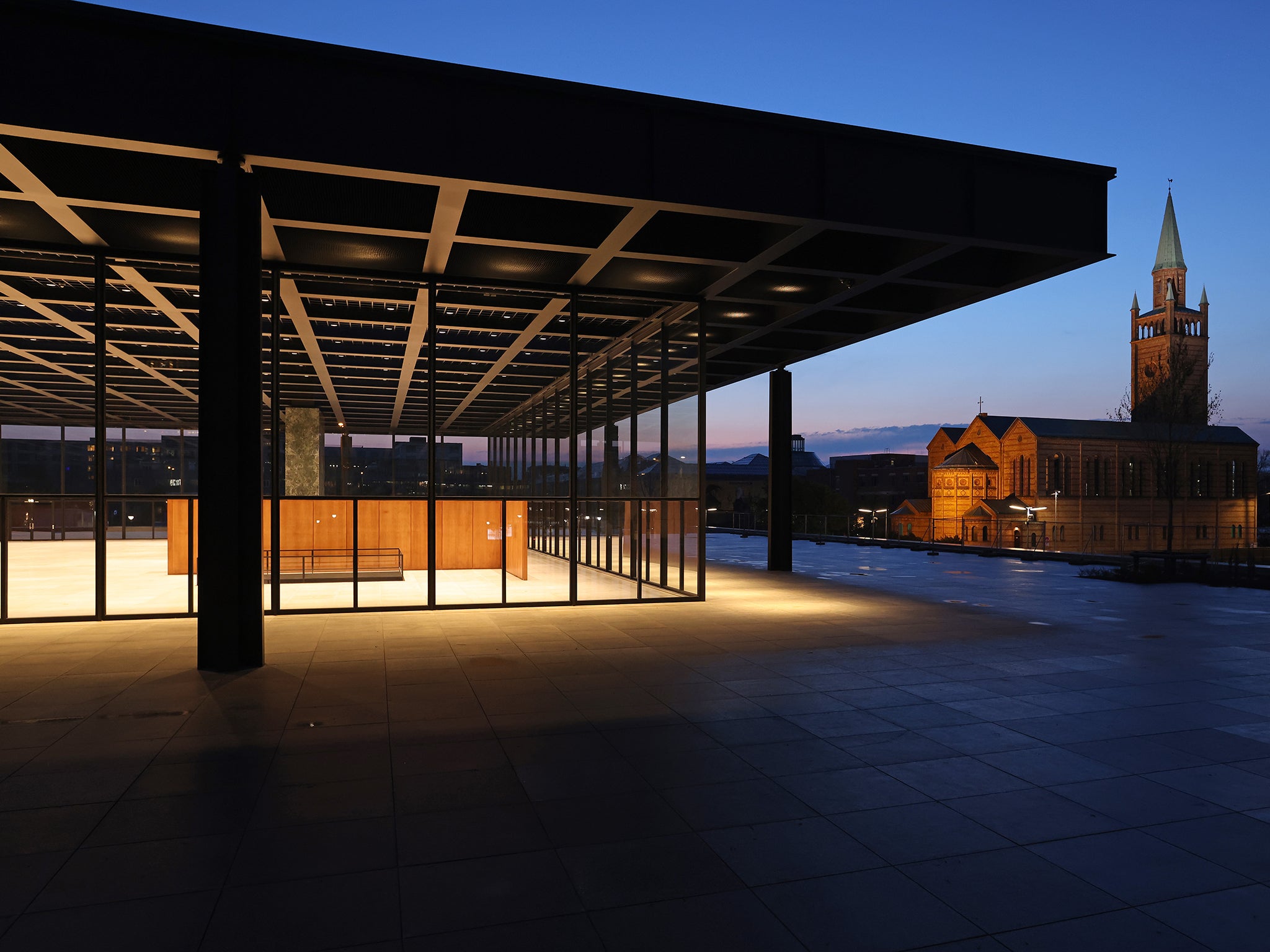
In the reconstructed centre of Berlin, just down the road from Potsdamer Platz, there’s a building which encapsulates the renaissance of this wonderful, awful city. The Neue Nationalgalerie was built to house West Berlin’s modern art collection, but the greatest artwork in this collection is the building itself. The swansong of Germany’s greatest modern architect, Mies van der Rohe (the man who coined the phrase, “Less is More”), the Neue Nationalgalerie was the apotheosis of his functional, minimal style. It caused a sensation when it opened in 1968. It still looks sensational today.
A steel skeleton with huge glass walls, from a distance it looks more like a futuristic temple than a modern art museum. It’s even more thrilling once you step inside. The sunlit foyer is impressive, but where on earth is all the art? The answer is downstairs, in a gigantic basement, hidden beneath the main building. The final revelation is the sunken garden, which doubles as a compact sculpture park. After wandering through a labyrinth of subterranean galleries you emerge, blinking, back into the light.
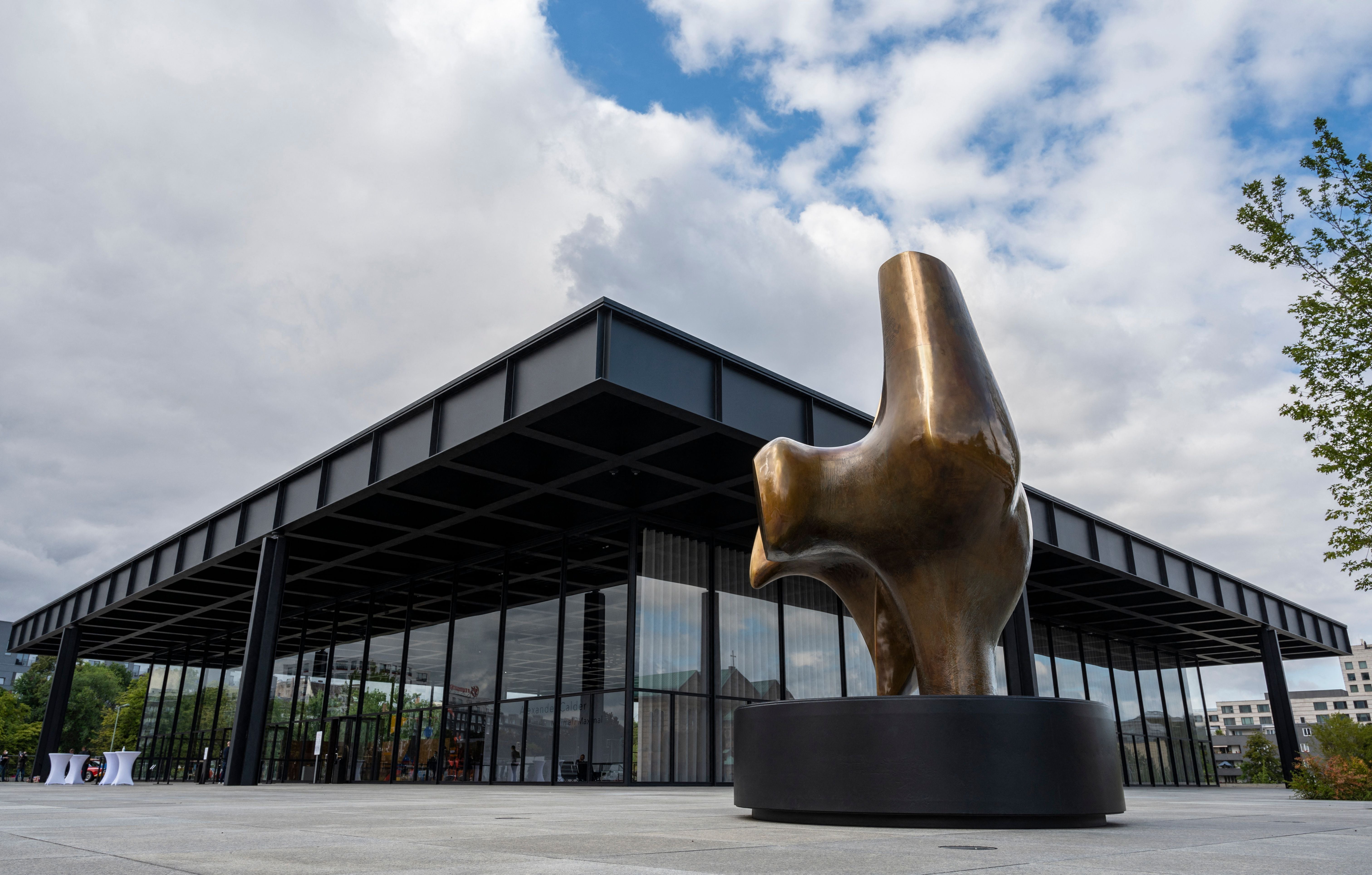
For 20 years, the Neue Nationalgalerie was the cultural hub of West Berlin – not just a gallery, but a place to meet up and hang out. Then, in 1989, the fall of the Berlin Wall transported it from the eastern edge of the free world to the middle of Germany’s reunited capital. The surrounding area, a no man’s land for a generation, sprang back into life. Potsdamer Platz resumed its former role as Berlin’s entertainment district. The Brandenburg Gate, shut off behind the Iron Curtain for 40 years, was now just a short walk away.
However, half a century of constant use had left this landmark looking rather tired, so in 2015 it closed for renovation. Six years on, it’s just reopened, and it’s never looked better. What a treat it is to see Mies van der Rohe’s meisterwerk restored to its former glory! When I went back there last month, it was swarming with people – not only inside, but outside too (the concourse has become an ad hoc skateboard park). Mies wanted this gallery to be a treffpunkt, a meeting place. I think he'd like the way it’s turned out.
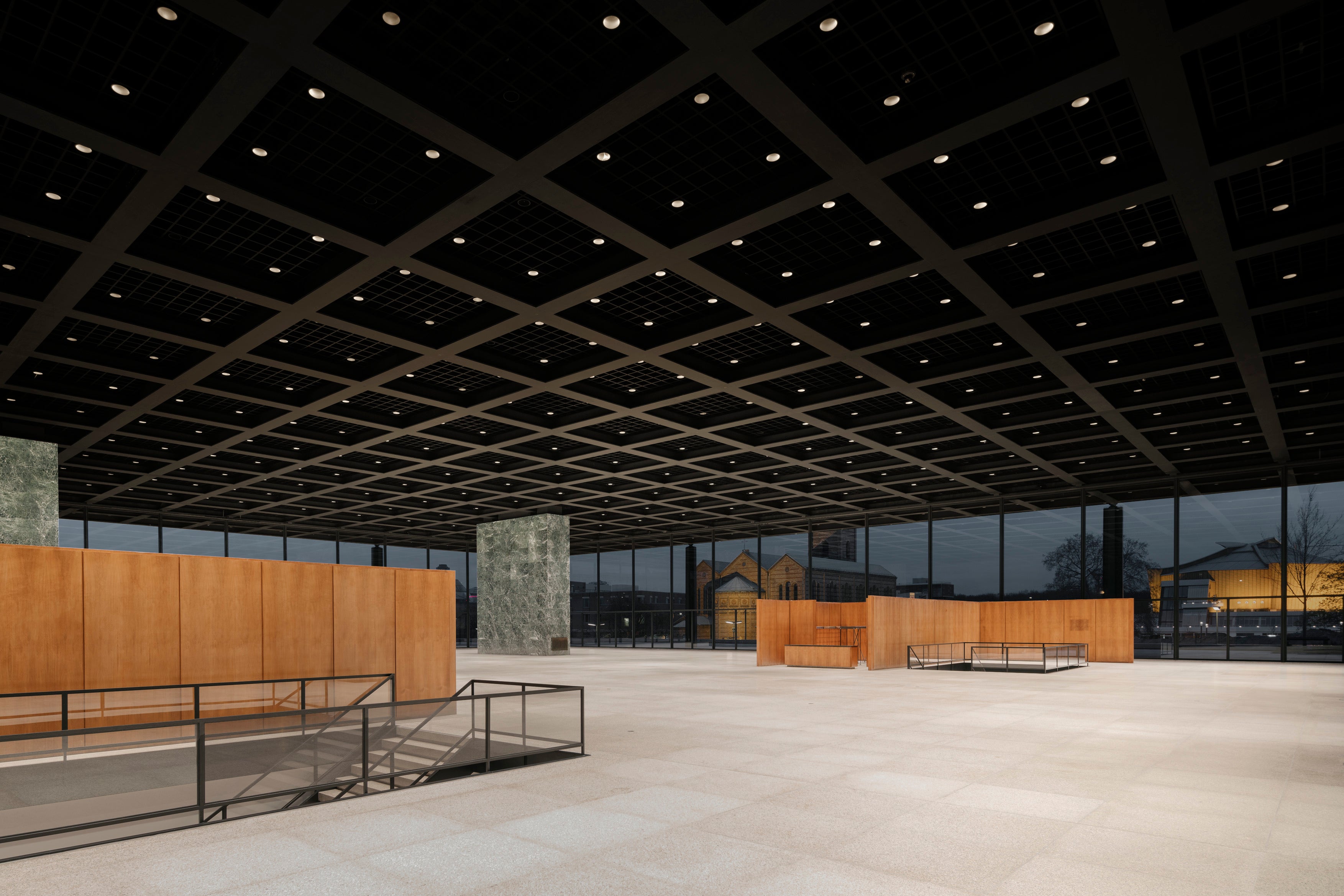
Maria Ludwig Michael Mies was born in Aachen, Germany, in 1886. His father was a stonemason. He started off working for his father, but despite his lack of formal education he was determined to become an architect. He gravitated to Berlin, and ended up working for the pioneering modernist architect, Peter Behrens. In 1913, he opened his own practice. Berlin gave him the opportunity to reinvent himself. He changed his name to Mies van der Rohe, both an arriviste affectation and a self-deprecating joke (to add “van der” to one’s surname is generally considered rather nouveau riche, but Mies added an element of self-mockery by adopting his mother’s maiden name – Rohe, meaning rough or raw, is a synonym for crude or coarse).
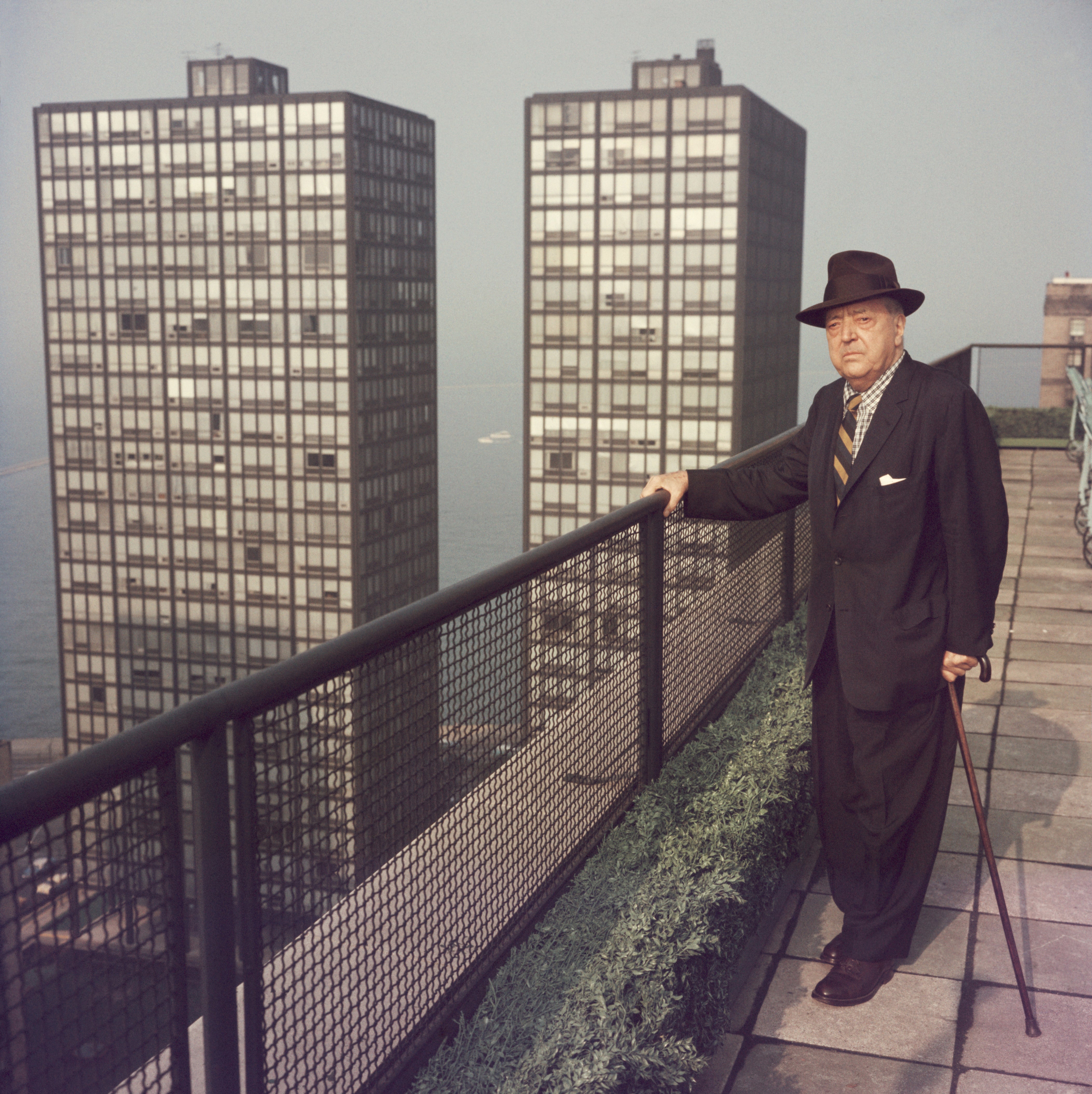
Mies’s career was interrupted by the First World War (in which he served in the German army) but during the Weimar Republic he flourished. Although many of his buildings remained unrealised, he developed a reputation as a daring, innovative architect. His big breakthrough was designing the German Pavilion for the international exposition in Barcelona in 1929. This minimalist building was avant-garde, but above all it was beautiful – a manifesto for a new kind of architecture, full of boundless possibilities.
In 1930, Mies became director of the Bauhaus, that groundbreaking collective which revolutionised every area of the applied arts. It was a backhanded compliment (of the cruelest sort) that when Hitler came to power, one of the first things the Nazis did was shut down the Bauhaus. Mies stayed on in Berlin, but he struggled to get commissions. In 1938, he emigrated to the United States. In the US he built the skyscrapers he’d been unable to build in Germany, establishing an architectural style that’s since become ubiquitous the world over. From New York to Sydney, from Dubai to Shanghai, every high-rise cityscape owes something to Mies van der Rohe.
Wandering around Chipperfield’s Kunsthaus extension, you can see the influence of Mies van der Rohe – the airy atrium, the wide open spaces – but there’s nothing derivative about it
Mies’s tower blocks were stunning, but they spawned all sorts of shabby imitators. You only need to take a walk around Berlin (or any other European capital) to see that. It’s his low-rise buildings like the Neue Nationalgalerie which have stood the test of time. When Mies began this building he was nearly 80, and it proved to be his curtain call. In 1967, he travelled here to see the roof lifted into place. It was his last visit to Berlin. He wasn’t well enough to attend the opening, in 1968. He died in Chicago, his adopted home, in 1969. Accompanying him on his final visit was his grandson, the architect Dirk Lohan. Lohan was project manager on the construction. He was a consultant on this renovation. It feels as if history has come full circle.
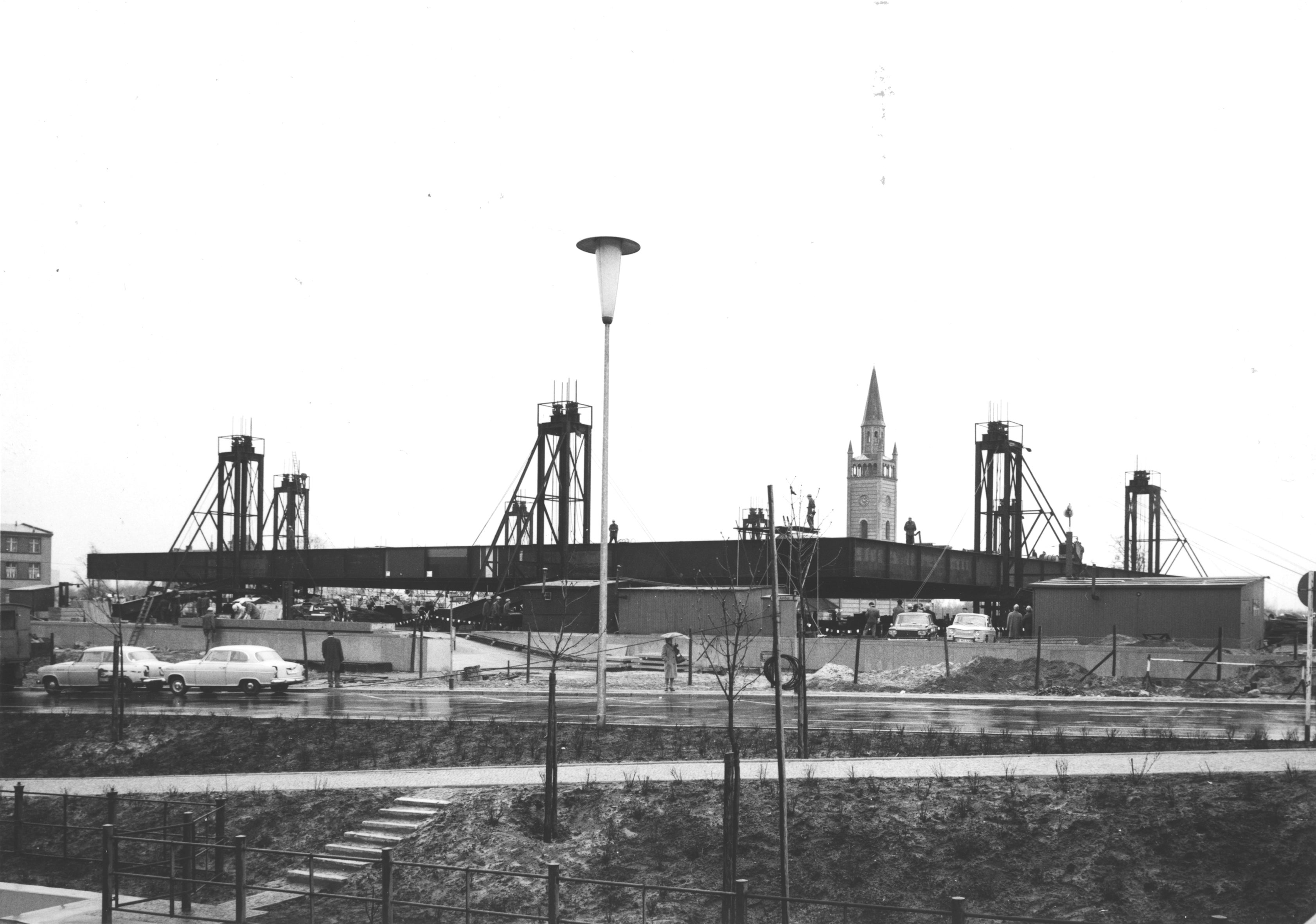
Even if it had only been a rudimentary renovation, this restoration would still be newsworthy, but what makes it remarkable is that it’s been conducted by Britain’s leading architect, Sir David Chipperfield. During the last decade Chipperfield has become something of an honorary Berliner, lauded for his masterful renovation of Berlin’s Museum Island, and this project bears all the hallmarks of his understated house style. Unlike a lot of other “starchitects” he doesn’t try to impose his own personality upon old buildings. Like a great director or conductor, his work is subtle and oblique. “As much Mies as possible” was the watchword for this assignment, and the mark of its success was that when this gallery reopened, people raved about the genius of Mies van der Rohe rather than the genius of David Chipperfield.
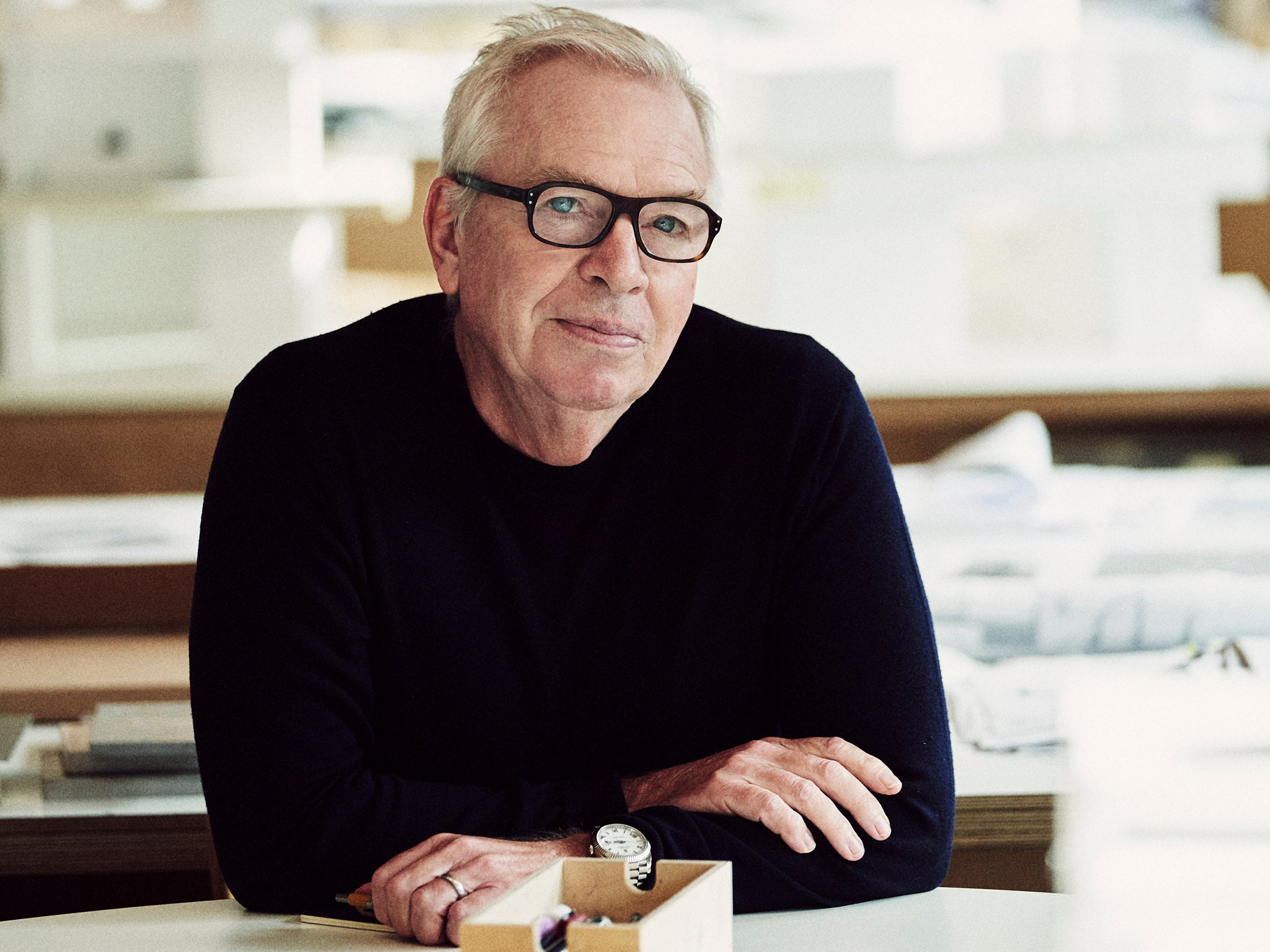
I’d interviewed Chipperfield a few years before and his observations about architecture had been fascinating. Now I wanted to ask him about Mies. As one of the most renowned architects in the world, he must have his pick of prestige projects. Why devote his time to restoring an old building, when he could build virtually anything he wanted, virtually anywhere he wanted? Clearly, Mies van der Rohe must be very close to his heart.
I finally caught up with Chipperfield a few weeks later, in Zurich. He’d built a new extension for the Kunsthaus, Switzerland’s biggest art gallery. If I could get along to the opening, his “people” said, I could meet him after the press conference. It was too good an opportunity to turn down.

Wandering around Chipperfield’s Kunsthaus extension, you can see the influence of Mies van der Rohe – the airy atrium, the wide open spaces – but there’s nothing derivative about it. What’s most striking is its discretion. It’s a resolutely modern structure but it’s in harmony with the older buildings that surround it. A question that Chipperfield asks himself is “who is the client?” For most architects, the conventional answer would be: “The people who are paying me.” However for him, there is another clientele to consider – the local inhabitants, the people who have to share this space. That’s what makes Chipperfield’s work so special. His buildings aren’t confrontational – they don’t set out to shock or startle. Their scale and style is sympathetic to their surroundings. That’s why they’re so easy on the eye.
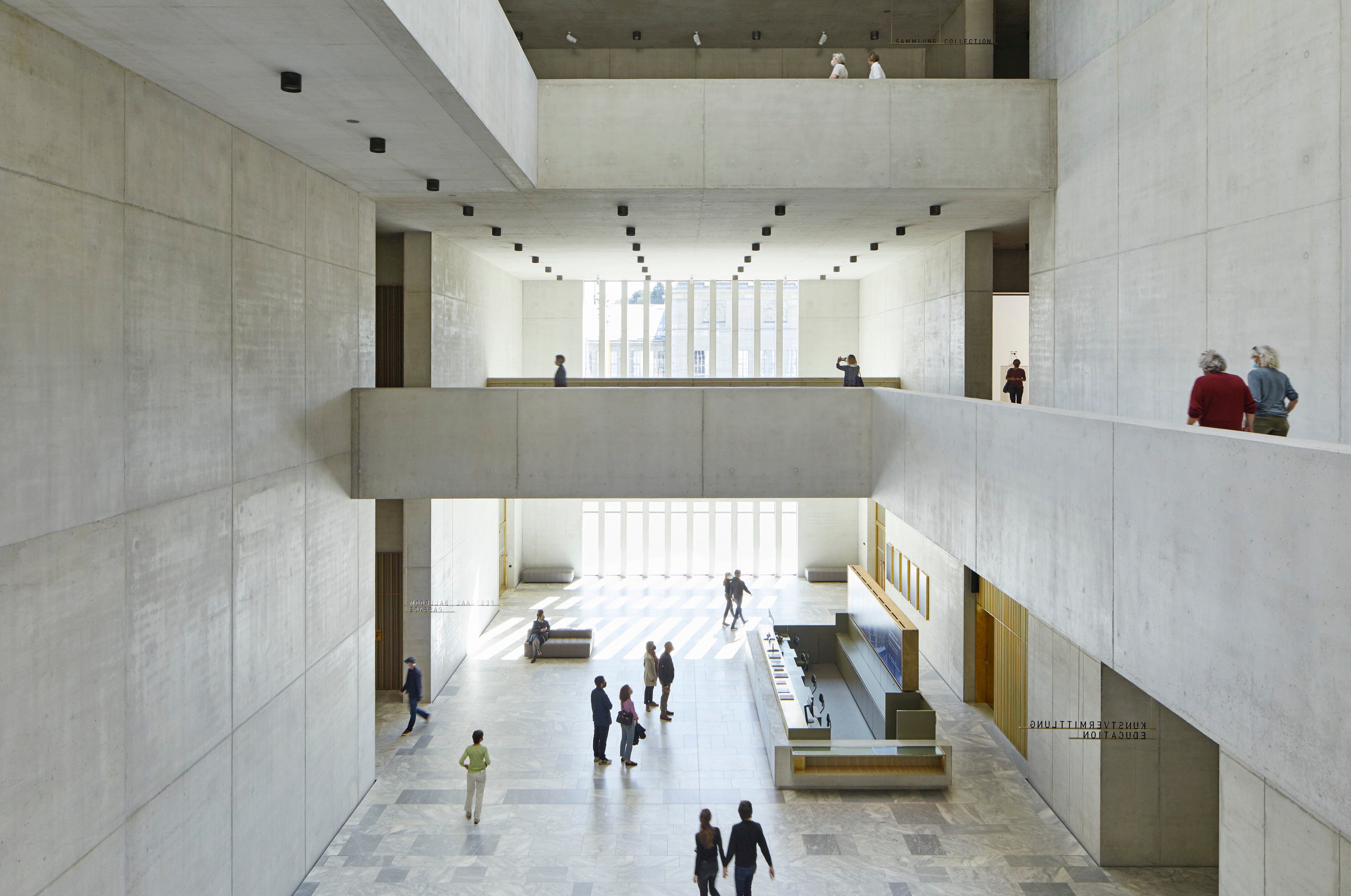
The original Kunsthaus, across the road, was built in 1910 by the Swiss Secessionist architect Karl Moser. A Brutalist extension was built alongside it in the 1970s. Moser’s building is commonly (and quite rightly) regarded as a masterpiece. The Brutalist extension is widely (and rather unfairly) regarded as an eyesore. Chipperfield said he wanted to “express a sense of respect” for Moser’s building, but his new extension also respects its neglected neighbour. By marrying elements of both styles, he’s established a connection between these contrasting buildings, uniting them in a seamless whole.
After the press conference I sit down with Chipperfield in a back room in his new extension, and ask him about his talent for unifying traditional and modern architecture. How does he manage to reconcile buildings of such dramatically divergent styles? “Partly because I’ve always worked abroad,” he says. “You’re always in somebody else’s city, somebody else’s place, and therefore I think it forces you to be quite respectful. But it also maybe makes you more sensitive to the atmospheric things. As a visitor, you know much less. In some ways, you know much more. You’re much less informed, and prejudiced, but you’re maybe more open to a city’s character.” In so many cities, old and new buildings seem to be in constant conflict. That isn’t Chipperfield’s raison d’etre. “I believe architecture is a bridge between us, as opposed to a large piece of art created by a brilliant architect.”
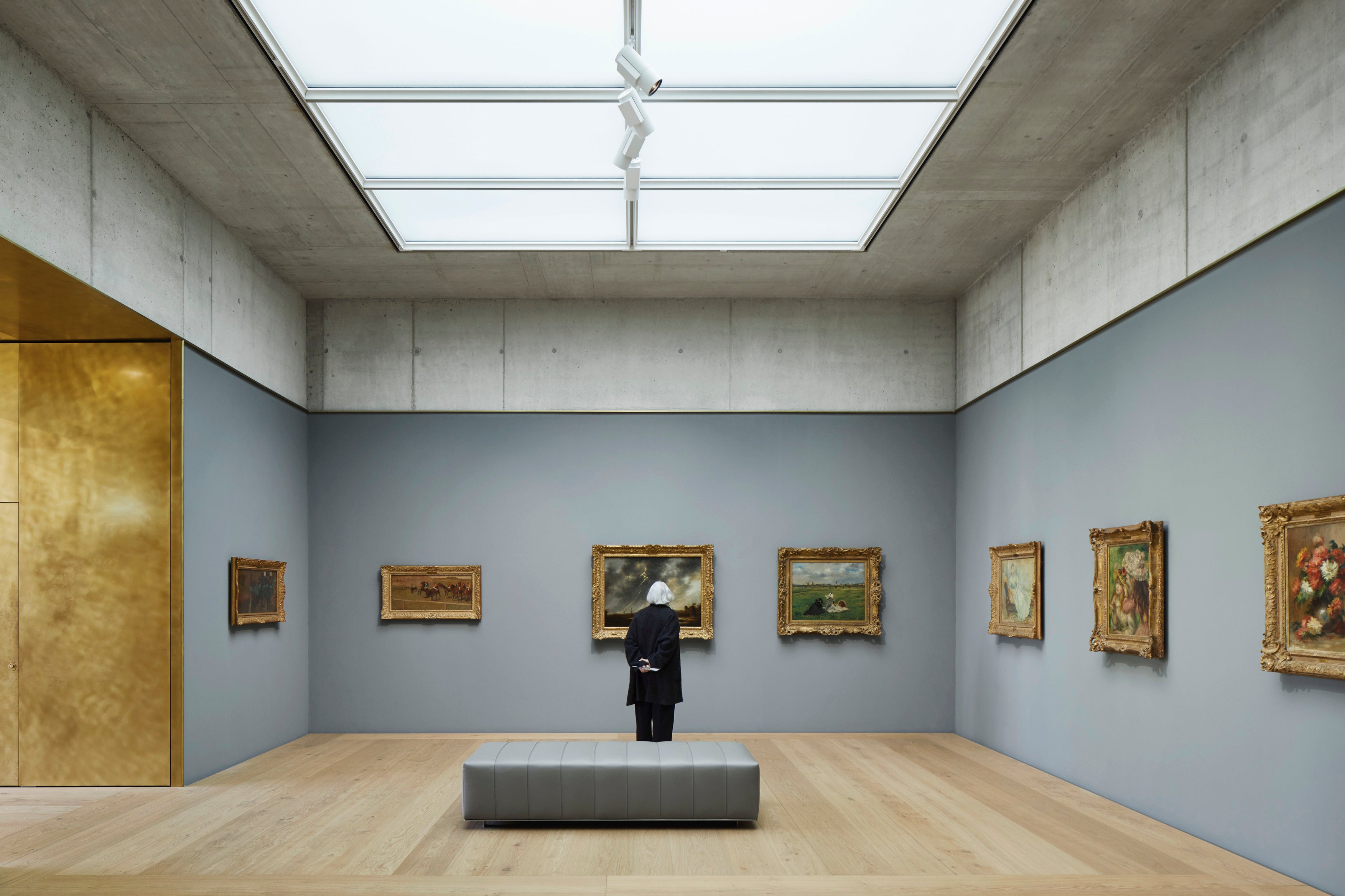
In that respect, he could hardly be more different from Mies van der Rohe, whose Neue Nationalgalerie is still a stark contrast to its surroundings, a lifetime since it was conceived. Yet while his modernist contemporaries, like Le Corbusier, have drifted in and out of favour, Mies has never gone out of fashion. His work still seems vital, provocative, alive. “All architects of my generation, we were fed a diet of all the modern heroes, but I suspect that Mies is the most robust,” concurs Chipperfield. “He truly was very elemental – he stripped things back.”
He would not have done it for other architects and other buildings, but this one had a special impact on him and it fascinated him, so he decided to act not as an architect but as a conservator
And yet, as Chipperfield explains: “His aesthetic still came out of construction.” What Chipperfield means, I think, is that there was an internal logic to Mies’s work. Every aspect of his architecture had a purpose. There was nothing superficial or extraneous about it. Form followed function, the Bauhaus philosophy in a nutshell. “With Mies there’s still a sort of old-fashioned dimension,” says Chipperfield. “There’s something about Mies which is philosophical, and it’s consistent from Barcelona all the way through to the national gallery.” Those two buildings are 40 years apart, but they feel entirely complementary, the bookends of his career.
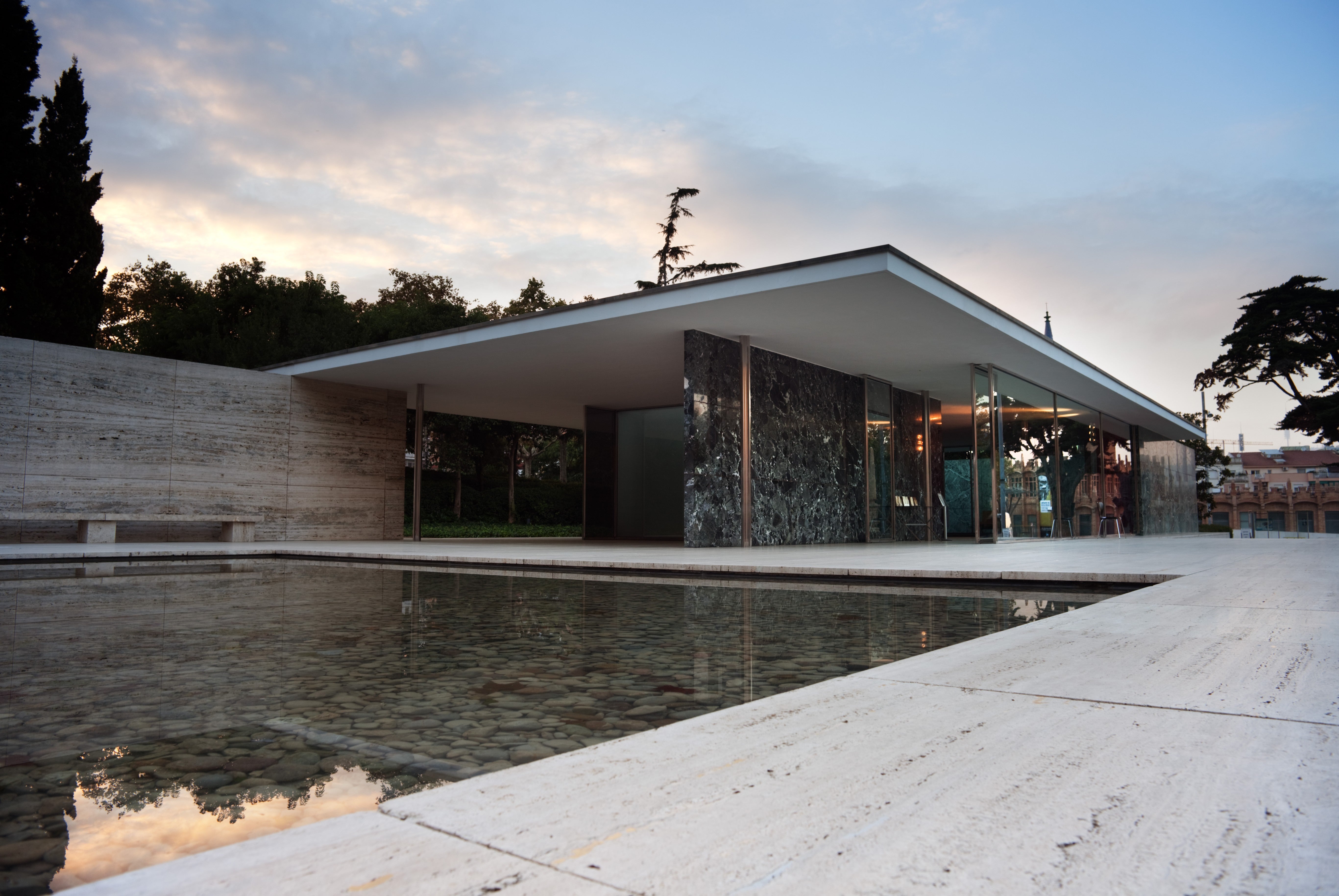
“I visited that building in 1981 and it left a big impression on me,” says Chipperfield, recalling his first visit to the Neue Nationalgalerie, in the days when Germany was still divided, and West Berlin was an oasis of liberalism within East Germany. “It’s a very utopian building. It’s Mies at his most pure – the eight columns, the roof and four glass walls… And then if you put that in 1960s West Berlin, as a gesture of re-civilisation, then that potency of this utopian building in this slightly dystopian moment is, I think, very powerful, and charges the building with a bit more than just aesthetics.”
After five years work on it, Chipperfield is still a fan of this iconic structure. “The planning still works well, the big decisions he made are still powerful.” And the man who built it remains an influence, as he has been throughout Chipperfield’s career. “There was always reference back to Mies, probably more than any architect,” he says. “His whole approach to architecture – it was always an inspiration… I spent a lot of time in Japan, Japan influenced me enormously, and the idea of reduction is a very Japanese thing, and therefore, off the back of that, Mies made a lot of sense to me.”
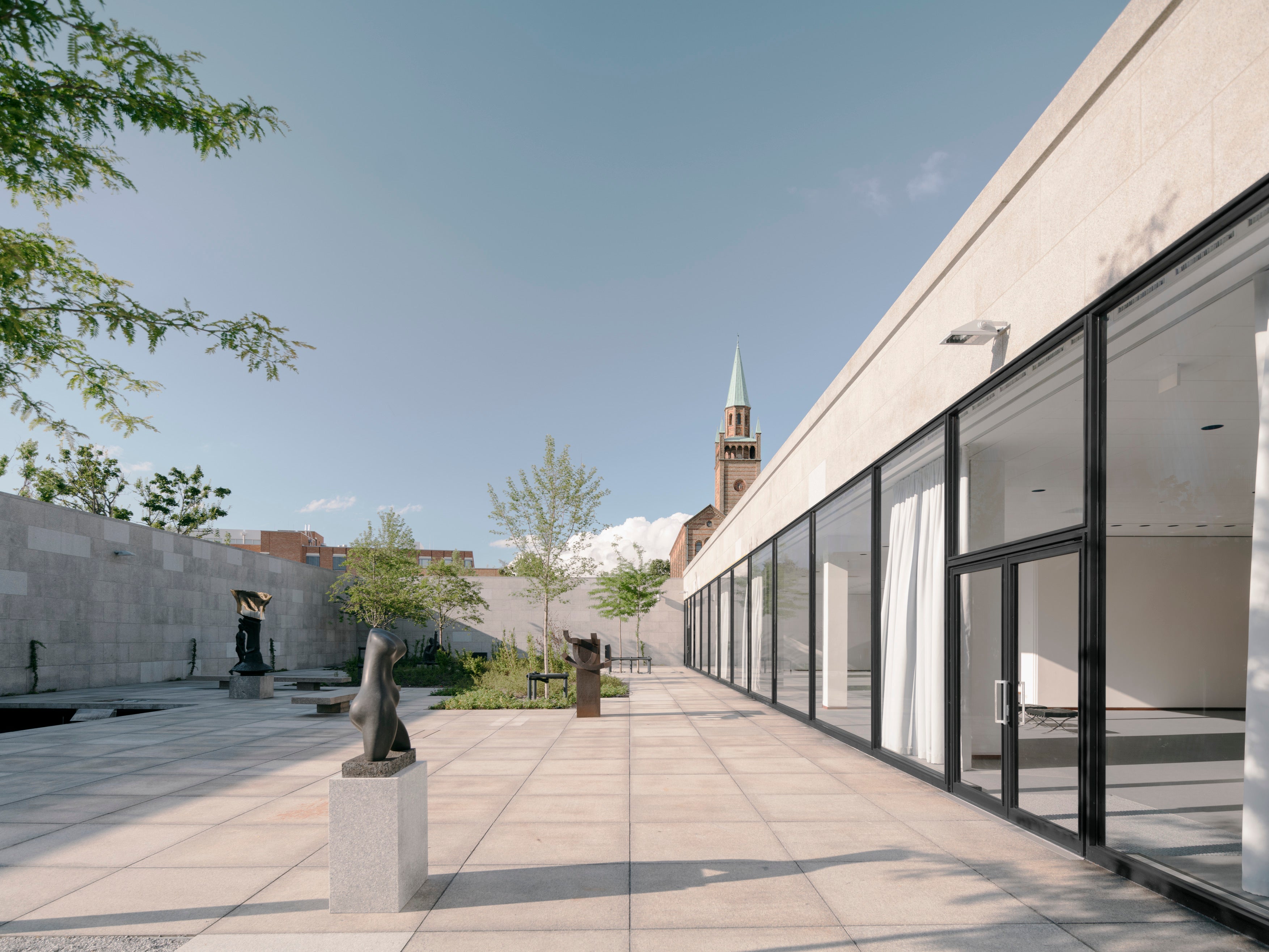
Back at the Neue Nationalgalerie a week later, I meet Dr Dieter Scholz, curator of modern art at the gallery since 2009. As Scholz points out, the decision to build a gallery here in 1965 was an act of great political significance. In those dark days, the Soviet bloc regarded West Berlin as something transitory and temporary. Building a state-of-the-art gallery here was a declaration of intent, a signal that the west was here to stay. “It was a statement,” says Scholz. “It was labelled Neue Nationalgalerie – new national gallery – to mark that the west had a national gallery of its own.”
It was also an act of great personal significance for Mies himself. Before the war, his architectural office was only a stone’s throw from here. Much of the area was then demolished to make way for Germania, Albert Speer’s megalomaniacal plan to transform Berlin into a Nazi megalopolis. What was left was then destroyed by Allied bombers during the Second World War. By 1945, what was once one of Berlin’s busiest districts had become an empty space. With the Neue Nationalgalerie, Mies set out to revive and reinhabit it.
“The city of Berlin intended to honour him as one of the most important architects of the 20th century – he felt very honoured when he came back to Berlin,” explains Scholz. Mies was offered various projects in various locations around the city, but for him there was no contest. “He decided to do a museum, and he decided to do it right here.” What he created was more than just a gallery. “It’s an open space where anything can happen.”
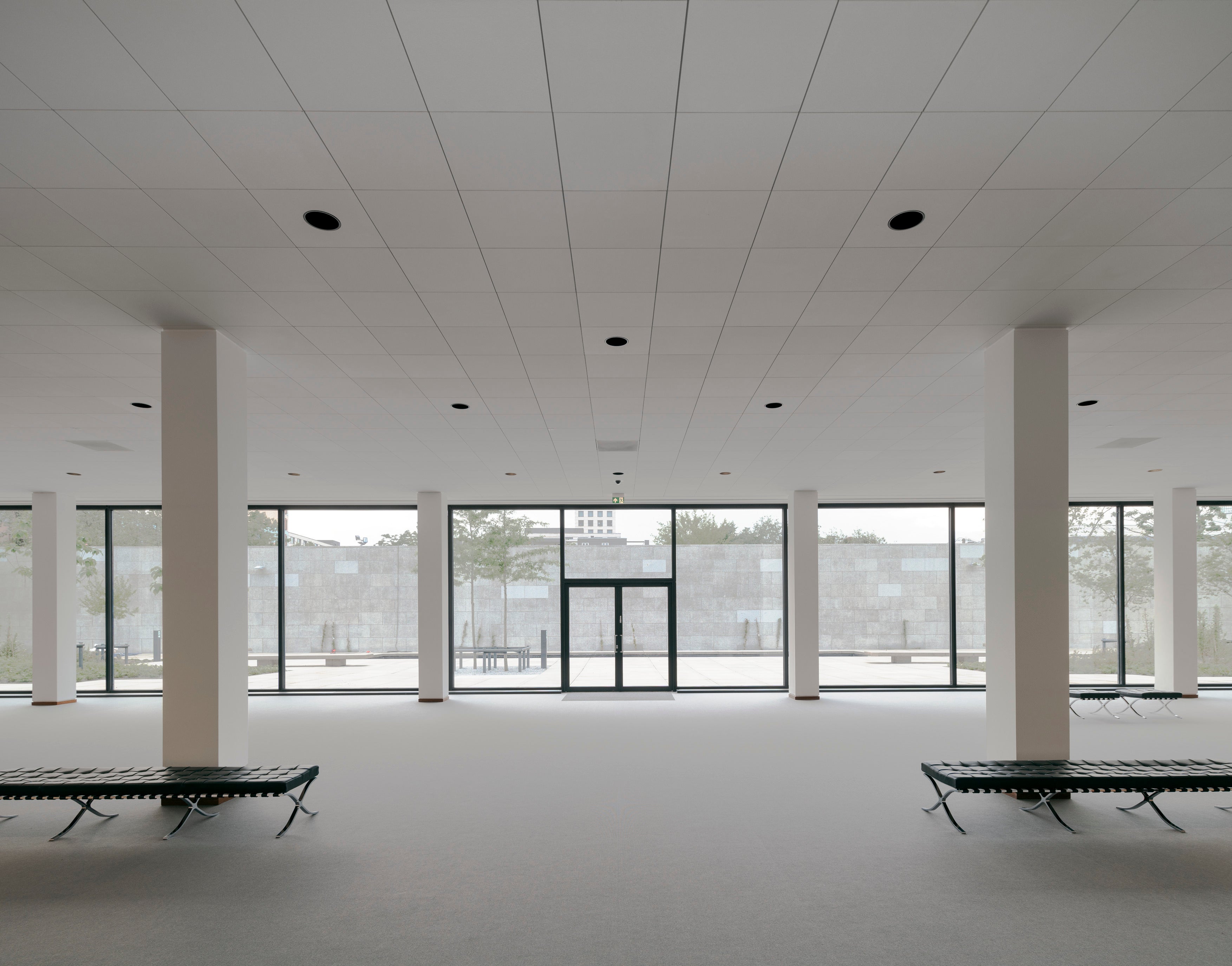
Scholz came here several times when he was a student, during the Cold War. “It impressed me very much. It’s a marvellous building.” And Chipperfield’s light touch has been crucial in preserving its unique ambience. “His task was not to present himself as an architect. He used to say, ‘I will only become visible if I make mistakes.’” For an architect as renowned as Chipperfield, such humility is rare. “He would not have done it for other architects and other buildings, but this one had a special impact on him and it fascinated him, so he decided to act not as an architect but as a conservator in a way, to conserve and reconstruct this building.”
Hence, as you walk around the Neue Nationalgalerie, it’s not Chipperfield who’s centre stage, it’s Mies van der Rohe – and that’s exactly as it should be. “He was very radical,” says Scholz. “He was one of the major architects of the 20th century.” Will Chipperfield be regarded as one of the major architects of the 21st century? I believe he will be, but his legacy will be a lot less overt. Mies was a revolutionary. He showed how modernism could transform our cities. Consequently, the architecture of the last century has been a kulturkampf, a battle between competing styles. Chipperfield’s architecture is consensual – it’s about bringing people together. He isn’t bothered about grand gestures, he’s far more interested in finding common ground.
I say goodbye to Dr Scholz and walk up the road to Potsdamer Platz. Between the wars this was Berlin’s answer to Piccadilly Circus. In 1945 it was a sea of rubble. Until 1989 it was a barren wilderness between the inner and outer Berlin Wall. After reunification it was rebuilt, in a high-rise style which owed a lot to Mies van der Rohe and a good deal to Fritz Lang’s Metropolis. Yet barely a generation since it went up, it already looks like a period piece. The age of the skyscraper is surely over, and Covid has only hastened its demise. Meanwhile, back at the Neue Nationalgalerie, the skateboarders are practising their stunts outside an older, smaller building that still looks avant-garde. As Mies van der Rohe said himself: “Less is more.” Much more.
For more information about art and architecture in Berlin, go to visitberlin.de
For more information about art and architecture in Zurich, go to zuerich.com
Join our commenting forum
Join thought-provoking conversations, follow other Independent readers and see their replies
Comments



Bookmark popover
Removed from bookmarks